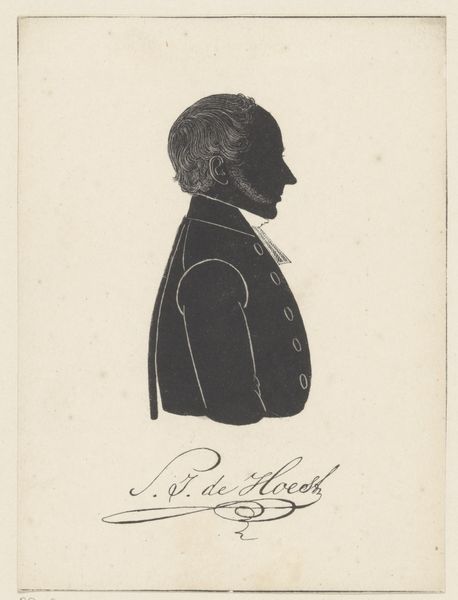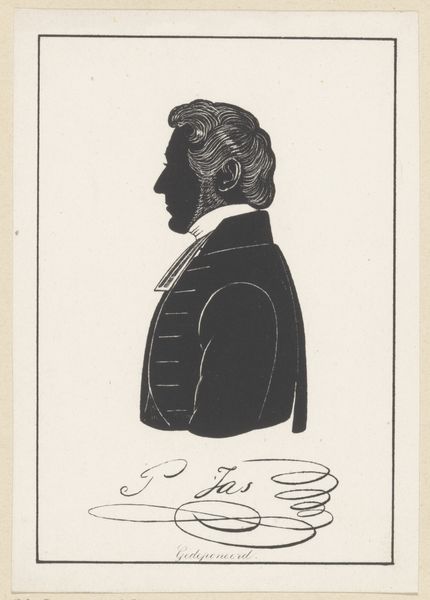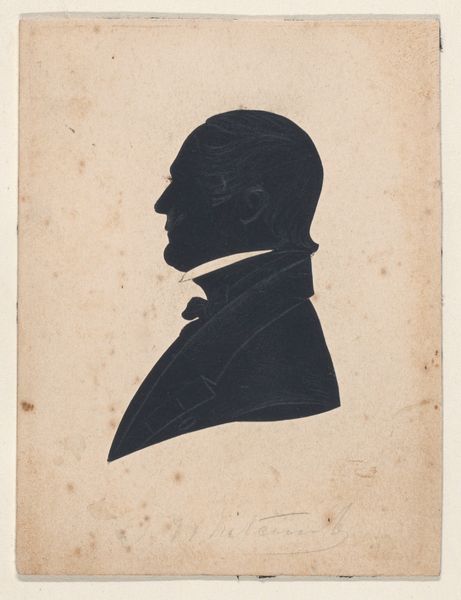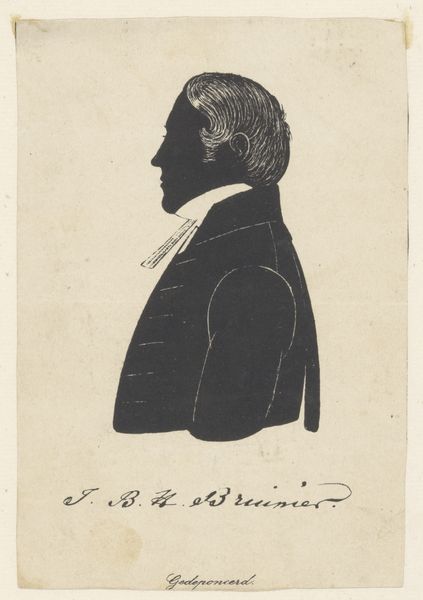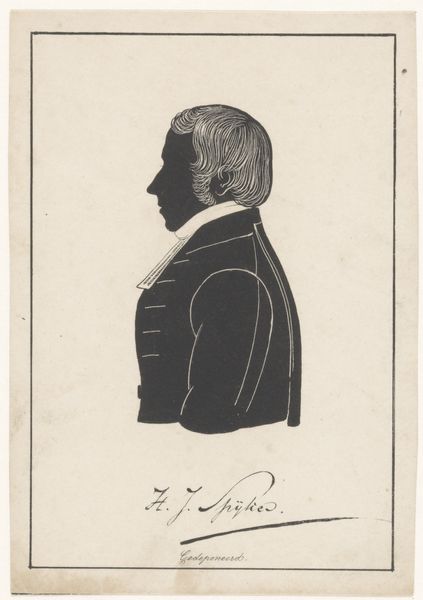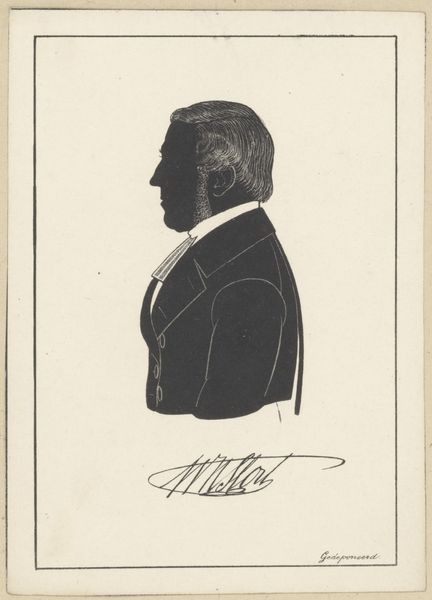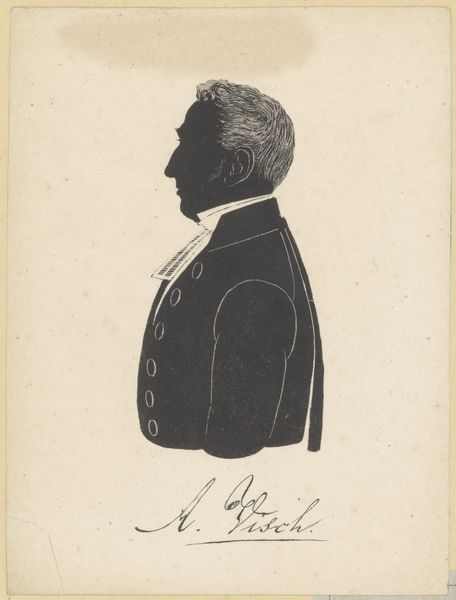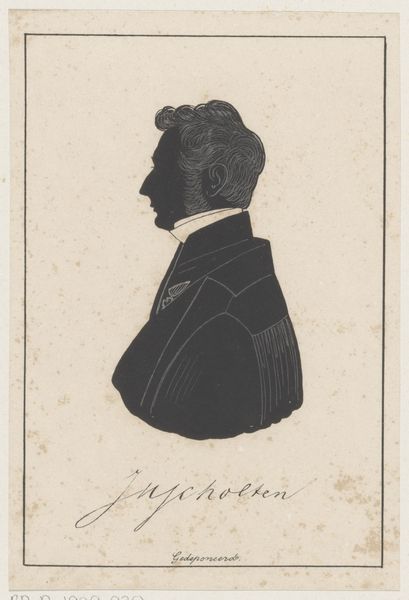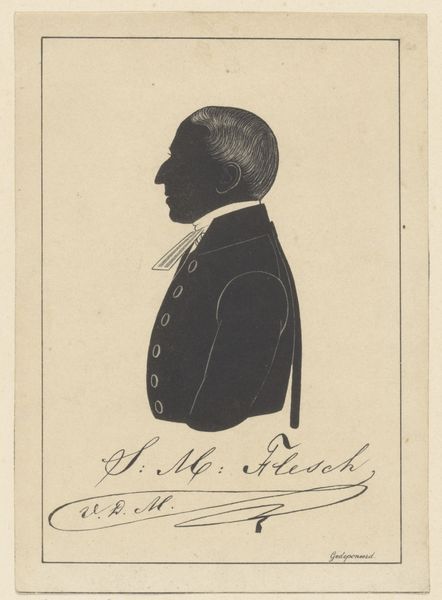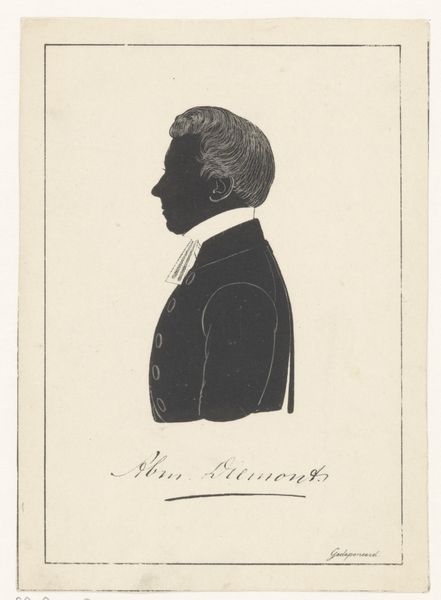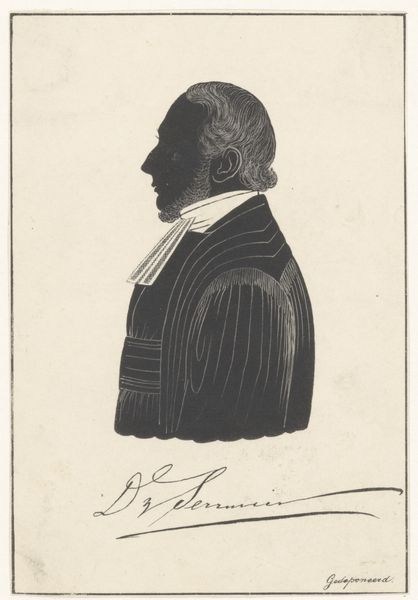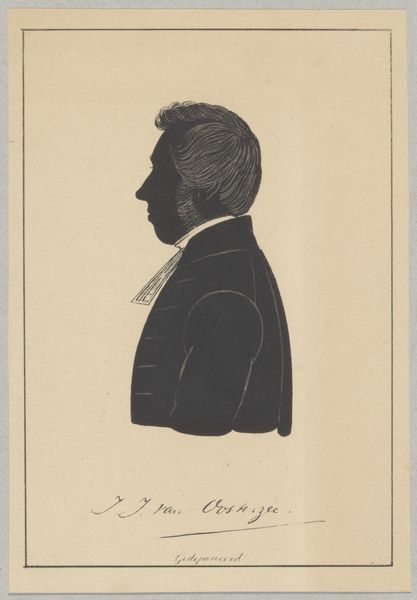
drawing, paper, pencil
#
portrait
#
drawing
#
figuration
#
paper
#
form
#
romanticism
#
pencil
#
line
Dimensions: height 161 mm, width 103 mm, height 255 mm, width 189 mm
Copyright: Rijks Museum: Open Domain
This silhouette portrait of J.E.C. de Wijs was made by Pieter Barbiers IV using cut paper and possibly ink, sometime in the first half of the 19th century. Silhouettes like these were a popular, relatively inexpensive way to have your likeness recorded. It was a pre-photographic method, and therefore quite a different experience than we might expect from a portrait today. The artist would typically use a device to trace the shadow of the sitter's profile, then carefully cut out the image from black paper. Here, the artist has added more detail with ink, such as the lines of the hair. The starkness of the silhouette is softened by the delicate script, and there's a real elegance to the composition. The practice of silhouette-making is interesting because it’s a craft that became entangled with social trends and economics. It offered a tangible, personalized product in a period of increasing industrialization. By appreciating how this silhouette was made, we get a richer sense of its original context, and its significance beyond just a likeness.
Comments
No comments
Be the first to comment and join the conversation on the ultimate creative platform.
